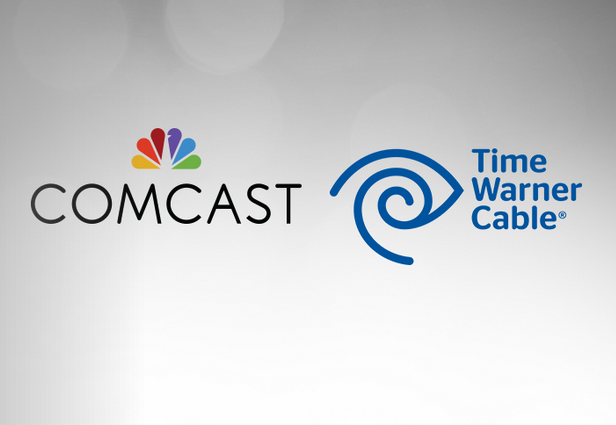Comcast filed a lengthy public interest document with the Federal Communications Commission today ahead of tomorrow’s Senate Judiciary Committee hearing to discuss its $45.2 billion merger with Time Warner Cable.
And annoyingly, the company has a pretty solid argument lined up for why the deal should receive approval.
Comcast has made a few main points from the very beginning of the deal that tout its benefits to consumers, including Internet network speeds that are faster than TWC as well as a what is says is a better television/video service offering. These points are both true, but that’s barely scratching the surface for the company’s strategy.
Briefly, here are the core portions of Comcast’s argument that might actually sway the Senate committee members into believing this merger is a genuinely good thing for the country:
- An accelerated build out of Comcast’s planned national Wi-Fi network, which would actually provide some measure of new competition between Comcast and wireless carriers like Verizon and AT&T.
- Providing greater access to Comcast’s “Low-Income Essentials” broadband Internet service. So basically, more people will presumably be able to get moderately quick high-speed Internet access at a price that’s much lower than the standard tier of service — something that the Obama administration has pledged to do since 2004.
- The merger would mean that Comcast’s previous mandate to uphold net neutrality — which it agreed to as terms for regulatory approval of its purchase of NBCUniversal — would be extended to the 40 percent of the country where Comcast would be available.
- The most tired point Comcast has made about the merger is that its actually not decreasing the level of competition since TWC and Comcast don’t compete in the same markets. This is true on a very surface level, because TWC customers would just become Comcast customers.
- The company said it also competes with the likes of Netflix, Apple, Google, and other tech giants when it comes to multichannel video products — aka its cable TV service, digital video store, and video on-demand rental store. But all of the other big competitors in this sector have national reach, which the company claims puts it at a disadvantage that would be addressed by merging with TWC. In essence, Comcast is saying regulators would be harming competition in multichannel video if they don’t approve this merger.
Of course, there are many more talking points Comcast will want to address during the hearing, but those are the big ones. But regardless of how convincing the company’s argument is, the Senate committee will have plenty of opportunity to ask some hard hitting questions.
That said, here are six things Senators need to address tomorrow:
- Senators should drill Comcast about the 300Gb data “threshold” (aka data cap) it places on its Internet service subscribers. The company has previously stated that this threshold is high enough so that the vast majority of people will never reach it. But with a growing push for high-def digital media streaming (4K-quality) and more people using high-speed consumer Internet, the threshold might not be so impossible to reach for at least a small portion of people.
- If Comcast’s resources will enable the company to operate TWC’s markets for less money, as the company has previously stated, why then will the current TWC customers not pay lower bills? Comcast will likely respond that it needs to spend money to ensure it remains competitive and that this will be expensive. However, how Comcast is spending its money might be relevant. For instance, if its dumping lots of cash into other areas of its business that’s unrelated to the ISP service, the Senate may want to know why.
- Digging into Comcast’s logic for competing with other multichannel video competitors could open up a huge can of worms. The Senate should ask why Comcast can’t develop standalone multichannel video offerings that aren’t tied to people being subscribers of its television or high-speed Internet service.
- When it comes to competition, the Comcast/TWC merger is most vulnerable. Comcast does have a track record (over the last few years, anyway) of gradually improving its services. But that work isn’t the only thing that drives innovation that’s beneficial to consumers. Senators could bring up Google Fiber’s role in getting Comcast to improve its Low-Income Essentials high-speed Internet tier. Also, it would be useful to look at competition from a local-market standpoint rather than a national one. (What’s motivating Comcast to improve its services in all of its markets if competition isn’t stealing away business?)
- A federal appeals judge already ruled that the FCC doesn’t have the authority to manage the delivery of data over broadband networks, thus watering down the potency of net neutrality rules. Comcast and other ISPs are now permitted to charge companies a fee to optimize the delivery of data to consumers. The Senate can and should make Comcast provide a convincing explanation for why this isn’t an issue of net neutrality. There’s plenty of leeway here to get Comcast to agree to stipulations that force it to abide by the old net neutrality rules — or at the very least provide complete transparency for how it manages the delivery of data on its network.
- What assurances will current TWC customers have that their existing Internet services won’t be negatively affected while Comcast upgrades networks in those markets? Upgrading existing networks can take a significant amount of time, during which subscribers may experience outages or a degraded experience. If that’s what TWC customers can look forward to over the next few years — before getting that superior network Comcast keeps talking about — it may be a deal killer.
VentureBeat's mission is to be a digital town square for technical decision-makers to gain knowledge about transformative enterprise technology and transact. Learn More

